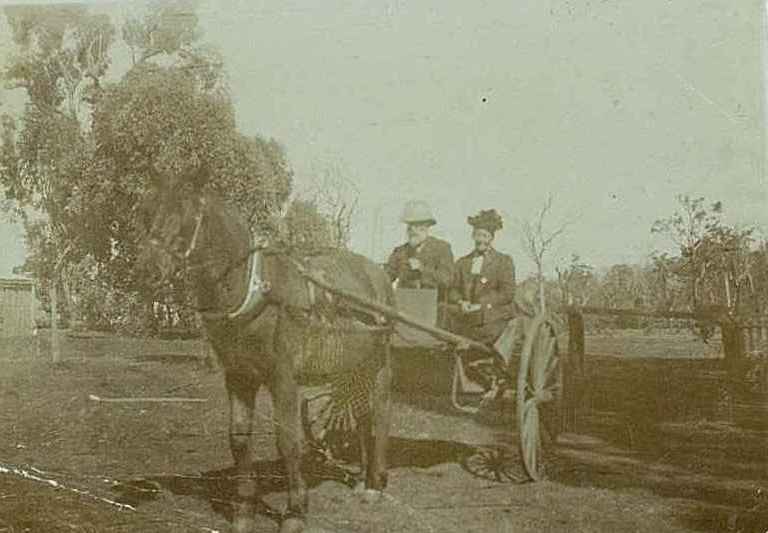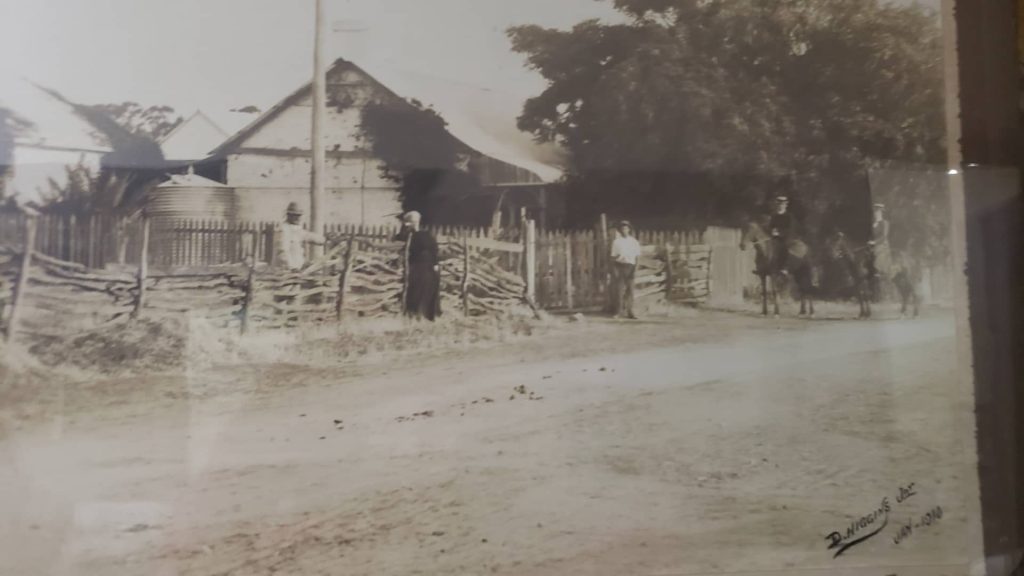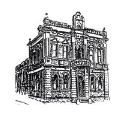Morby Cottage

Morby Cottage is open to the public on Sunday’s 11am – 3pm or by special appointment.
PLEASE NOTE: THIS MUSEUM DOES NOT HAVE EFTPOS FACILITIES. CASH ONLY
(Closed December to March)
JOHN MORRELL
John Morrell was an English Carpenter, but his ambition was to leave his home country and become a Farmer in the newly established Swan River Colony. He was 45 years of age but that did not deter him, and, as his wife Ann agreed with his plan to migrate to Australia, Morrell began preparations for his venture in a new land.
Morrell was busy for almost a year assembling goods he thought he would need. When he had completed his task, he had accumulated a formidable pile of agricultural machinery and implements, barrels of flour, biscuits, beef and pork, cases of butter, bags of cereals and packets of seeds. Morrell’s knowledge of carpentry led him to include a great supply of nails that should have lasted him a lifetime (7 cwt. of them). Guns and ammunition were not overlooked. Morrell’s collection included a brace of pistols, a rifle, a duck gun and a fowling piece – all of which was loaded into the small vessel “Rambler”, anchored at Steam Packet Wharf, London Bridge.
On 1 September 1830, John Morrell and his wife and two children arrived in a hackney coach, and were soon on board the ship, which sailed for the Swan River Colony later in the day.
After a slow and tedious voyage such as all the pioneers of our State had to endure, “Rambler” reached Capetown. Here Morrell and his family and his huge store of possessions transferred from the ”Rambler” to the “ Eliza” – a small sailing vessel of 390 tons. Before sailing, Morrell added fruit trees, vines and seed potatoes to his cargo. On the way to Fremantle, the “Eliza” called at Mauritius to obtain sugar (always a welcome commodity) for the settlers of the Swan River Colony.
The voyage ended abruptly in March 1831, when the ship struck a sandbank in Cockburn Sound. “Eliza” was refloated and, after disembarking, the Morrells unloaded their belongings and the “Eliza” resumed the voyage to Hobart town. The Morrells found themselves about 13 miles south of Fremantle, their possessions dumped in heaps in the nearby scrub. The summer sun beat down fiercely on the English migrants and doubtless their thoughts turned to their homeland. Inactivity was of no avail, and John Morrell was soon building a shack. Here the family lived for four months, before moving to Fremantle.
This was a time of great building activity at the Port, and Morrell’s services as a Carpenter were much in demand. However he had come to the Colony to be a farmer, and he found time to plant a small area with wheat and barley. His paddock was not far from where the Town Hall now stands in the heart of the present City of Fremantle. The yield from the crop was not very good, so Morrell cleared ten acres at Karrakatta, and planted the area with wheat. This crop also gave a disappointing return. Morrell was learning in a hard way how to farm in new land, and to sow a suitable crop at the right time.
Land in the Avon Valley been very favourably reported on by Ensign Dale, so after first satisfying himself, Morrell selected 500 acres situated about 25 miles down the Avon River from Mount Bakewell. After Morrell’s goods and chattels were itemised and assessed, he was directed to take up an area of 4,500 acres. In 1832, Morrell and his family set out from Fremantle in a bullock drawn dray. Slow progress was made through teaming rain to Guildford. Only a track led over the hills to York. Morrell then had to cut a road beside the Avon River to where his land was situated close to the present site of Northam.
Morrell named his property Morby Farm, and built a solid stone house near what is now Katrine Road. By seeding time of 1833, Morrell had cleared and ploughed a small paddock. The ploughing was done by Morrell with a single furrow plough drawn by a horse and bullock harnessed together. Because of hostile Australian Aboriginals, Richard Morrell walked beside his father and carried a loaded gun – ready should an attack occur. When he had finished seeding Morrell looked with deep satisfaction over the rich chocolate soil of his paddock. The bountiful harvest he reaped convinced him that here indeed was a good land.
Soon a township in the valley was proclaimed and named Northam after an English village of that name. Other settlers soon followed Morrell to the Avon Valley, including Peter Chidlow, after whom Chidlow (a small township 33 miles from Northam) was named. Peter Chidlow and a companion were both killed by Australian Aboriginals whilst the two men were shepherding sheep.
Morby Farm progressed so well that by 1835 Morrell was able to sell butter and cheese in Perth. A Church was built on Morby Farm and a school opened. From Morrell’s farm Northam grew to become the centre of one of Western Australia’s most prosperous districts.
Morrell’s few sheep increased to a sizeable flock on the abundant pastures Morby Farm produced. It was the practice in those days to swim the sheep prior to shearing in order to clean their wool. This was because clean wool fetched a higher market price. Morrell built a race in the Avon River where on a sunny spring day in 1843 he and his farmhands were swimming the sheep along a channel. Some rough play ensured amongst the farmhands, with one being pushed into the river. To the consternation of the young men on the bank, the farmhand sank immediately. Morrell dived into the icy river and rescued the man, but his heroic action cost Morrell his life. Within a week he had died of Pneumonia. Previously Morrell had chosen the place where he wished to be buried, and today an imposing monument marks the grave where the pioneer of Northam sleeps.

